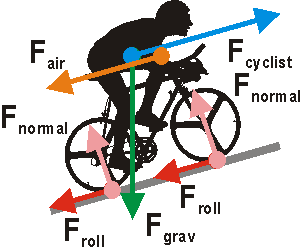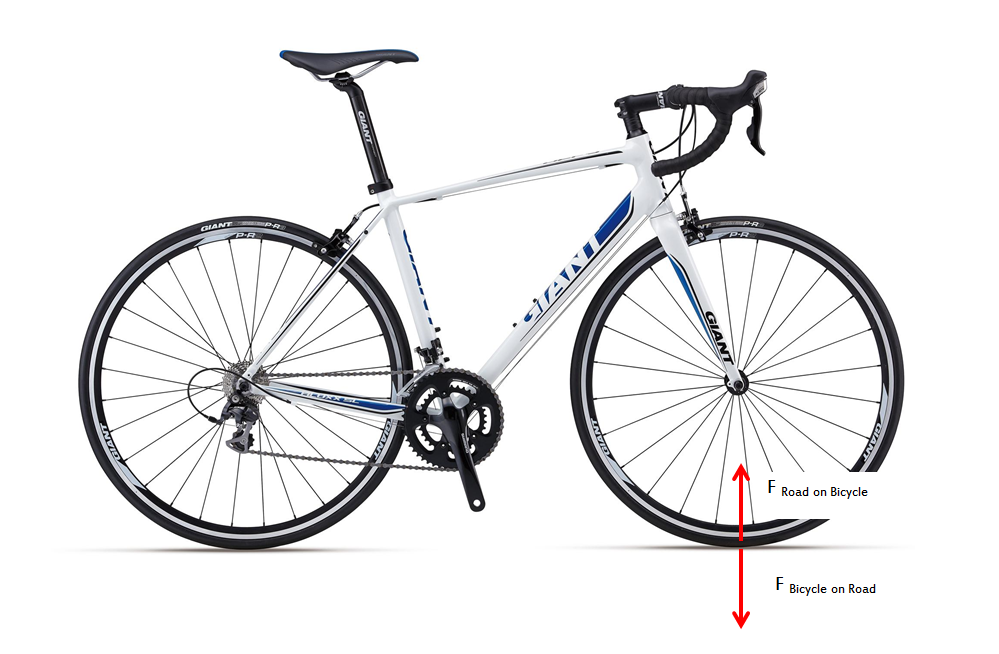Newton’s Three Laws

In our discussions of Inertial Motion, we asked how objects move when no external forces are acting upon it. Now we want to add external forces into the discussion.
Newton summarized object motion under the influence of external forces into three laws. The first dealt with inertial motion. The other two described the impact of external forces on inertial motion.
- An object at rest will remain at rest. An object in motion will continue at the same velocity in a straight line.
- An object’s inertial state only changes when forces act upon it. An object at rest will move, and an object in motion will change its velocity and/or its direction.
- For every force, there is an equal an opposite reaction force.
Newtonian Cycling
Newton’s First Law says that if our cycle is in the garage and we are on the coach watching TV, the cycle is going nowhere unless someone is stealing it. If we are riding on a smooth surface, we will continue moving in a straight line, though gradually slowing due to friction. It is also the reason we are able to coast.
Newton’s Second Law says practical cycling descriptions must account for the forces acting on the cycle. These include forces generated at the rear tire as a result of the pedaling, as well as aerodynamic drag, rolling resistance, and gravity.

Newton’s Third Law says that for all of our cycling forces, there is also a reactionary force being generated. This seemed to be an obscure law when I was learning it, but it is critical when trying to determine what is pushing and pulling on the CyclistCycle.
The simplest example is your cycle pushing down on the road. If there were no other forces acting on the cycle, it would fall through the road. However, the road pushes back with an equal and opposite force which results in a net force on the cycle keeping it at rest.

Here is another important example. The rear tire generates a force against the road that is in the backwards direction against the road. However, the force that actually moves you forward is the reactionary force in the opposite or forward direction.
Pedaling is our last example. Your are pushing the pedals in a clockwise direction. What you feel in your legs, however, is the reactionary force of the pedals pushing back against your feet.
Why are these laws important to Cycling?
Cycling is done in the presence of forces which are constantly pushing and pulling on the CyclistCycle. When you are not pedaling, the cycle coasts as a result of its inertial motion. Cycling is therefore an interactive dance between forces and inertial motion managed by the cyclist.
Next Topic: Rotational Dynamics
Next: Physical Work
